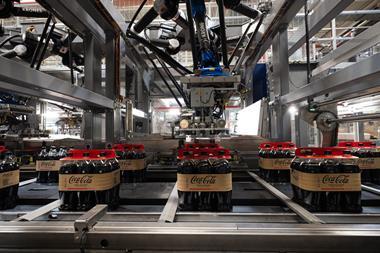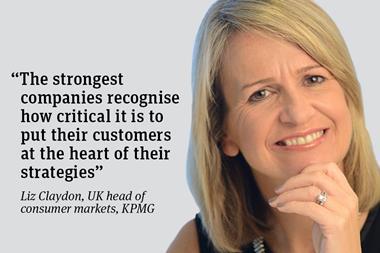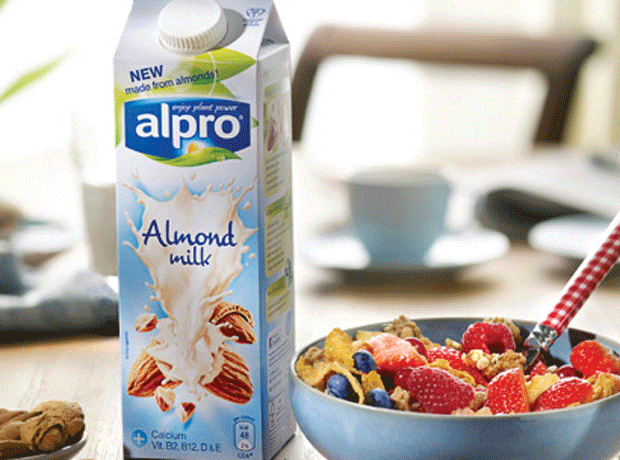The bogof, or buy-one-get-one-free, was once a much-loved piece of promotional jargon, even transferring into popular usage. Somehow two-for-the-price-of-one never had the same satisfactorily expletive impact. A tftpoo doesn't exactly roll off the tongue, either.
But as our table on p28 shows, it seems the bogof is being told to, well, bog off.
It's hard to say exactly why this is so. Are consumers favouring low-priced everyday goods as the credit crunch bites? Is it due to environmental concerns, with green organisations accusing retailers of contributing to the waste culture that sees one third of food thrown away? Bogofs are also accused of encouraging unhealthy eating habits as they offer double doses of food. "Buy-one-get-one-free offers are usually of high-fat, high-sugar, additive-laden products... obesity in a box," said Scotland's sustainable development commissioner Hugh Raven in February. "The supermarkets must encourage supermarkets to shift the balance towards healthier foods."
Supermarkets, however, seem only too happy to oblige, not least since there is increasing evidence that bogofs do not affect long-term sales.
Asda set the tone long before the credit crunch struck, abandoning bogofs in 2006 as it refined its Every Day Low Pricing policies. But as it looks on smugly, the supermarkets seem to be in a race to follow them.
Morrisons, Tesco and Somerfield are all axing bulk giveaways in favour of price cuts. According to Assosia, an independent retail monitoring agency, which produces these figures for The Grocer's Promotrack every week, last year 36% of Tesco's deals were bogofs.
In the first four months of this year that figure plummeted to 12%. Bogof sales at Tesco have shrunk from more than £70,000 per store per month in March last year to under £15,000 in January. Meanwhile the ratio of 'save' deals has risen from 23% to 46%.
Morrisons has followed the same path, shifting away from bogofs in favour of saves. It has doubled the role of half-price deals. Somerfield has similarly edged away, and tripled its ratio of half-price deals.
That means Sainsbury's is the only big-five multiple sustaining an interest in bogofs. In fact it's looking increasingly contrarian, with bogofs increasing from 10% to 27% in the first quarter of 2008, while 'save' deals fell from 53% to 29%.
Sainsbury's disputes the figures, which are based on 'extra space' promotions such as bin ends, gondolas, ladder racks and pallets. It calculates that bogofs accounted for fewer than 10% of promotions in the first quarter, exactly the same percentage as in 2007, while half-price deals are also running at the same level.
Overall market figures, however, show a clear movement away from bogofs, says Assosia marketing director Kay Staniland. "There's been a big dip. Consumers want to make an overall saving. They would rather spend 50p to get one product than a pound to get two. They no longer value bulk savings in the way they did."
This is borne out by our statistics, which show half-price deals coming from nowhere in the first quarter of 2007 to account for 7% of promotions in the same period in 2008.
Traditionally, food retailers have been slower to feel the effect of tighter consumer spending, but Paul Murphy, director of analytics at TNS Worldpanel, believes the downturn is having an effect. "The trend away from multibuys to half-price offers is not a dramatic shift yet, but I think this will be the start of a larger trend. It depends on economic conditions. More people are thinking about how to get value for money. If they have a lot of multibuys in their basket then, although they might be getting bargains, the overall price will be high, which isn't what they want."
The government-backed organisation Waste & Resources Action Programme, or Wrap, is lobbying against multibuys, arguing they contribute disproportionately to the binning of food. It's found a ready friend in Asda.
"There is undoubtedly a lot of waste with bogofs," says Asda spokesman Matt Thompson. "If they only want one and get two they'll just throw the other away. There is an environmental issue but also there is a psychological impact. Consumers won't think they are getting good value if they keep throwing food away.
"A lot of retailers use bogofs to mask the true value of their offering. Many often bump up the price of an item before it goes on bogof, so they will be charging more than they initially charged when the product wasn't on bogof. So while the customer still thinks they are getting a great deal, this is not the case.
"With our two-for-£x deals, the customers can see the price that the item is sold at individually. So, for example, olive oil may retail at 98p, and if we do a deal saying two-for-£1 then customers can instantly see that they are getting a fantastic offer. This way everything is transparent and simple."
Asda's Every Day Low Price strategy chimes with today's customers, says Staniland. "With its EDLP strategy, Asda consistently comes in as the cheapest retailer in The Grocer 33 and is consistently perceived as a 'cheap' supermarket," she says. "Ditching bogofs worked. The simpler 'save' message is being adapted by rivals as it uses no gimmicks, no fancy one-off promotions, just an 'honest' cut."
If retailers follow Asda and phase out bogofs they are unlikely to be opposed by suppliers. In fact, the falling out of favour of bogofs with supermarkets may stem from increasing evidence that bogofs are unsustainble also in terms of sales spikes. "There is no long term-effect with bogof promotions," says Murphy. "We at TNS spend all our time examining consumers to see if they continue buying when the goods revert to full price, and the answer is they do not."
The evidence that bogofs drive trial is beyond dispute. Research from IGD published in The Grocer in November showed a quarter of consumers had tried a new product because of a bogof, compared with 16% who had been lured by a 3 for 2, and 7% by a free sample.
Bogofs can also provide a quick profit boost. The question is what lasting value bogofs offer to brands. Figures from DDB Matrix suggest "bogof blips" may be less attractive than suppliers realise. Although a multibuy will lift sales by 70% in the short term, says DDB Matrix, 84% of these trade promotions are unprofitable for the brand owners in the short term.
In the longer term, bogof's effects can also be negative as future sales are cannibalised. Plus, in the following year suppliers are lumbered with a record of artificially high sales, which they must try and beat or risk being delisted, says Murphy. "If you want to experience double-digit growth in a year then bogofs are useful. If you want to grow by double digits in the following year by relying on bogofs, then it gets much harder. You can end up with blip sales, which leap up and then straight down again."
There are also practical concerns over bogofs. Jeremy Caplin of marketing consultant Dunnhumby says bogofs are a "logistical nightmare" that hurt both retailers and suppliers. "You suddenly need twice as much warehouse space, twice the labels and packaging, twice the logistical support. The retailer has dead space, storing product that is being given away for free. It's a sadomasochistic process!"
Caplin points to Cadbury as an example of a supplier that has abandoned aggressive promotions in favour of stable growth. "Their rivals are like lemmings, chasing volume while Cadbury wants profit." The multiples need to recalculate the true cost of bogofs and "wean themselves off the drug", Caplin adds.
So, is the bogof dead? In some categories the bogof makes better sense than others. For example in expandable categories such as biscuits, cake, confectionery and other snacks, the bogof can still be tremendously effective and could perhaps survive as the retailers' promotional weapon of choice.
Bogofs deliver worst value in storable and non-expandable food categories. Meat, poultry and fish is a typical "non-expandable" category (few consumers decide to eat twice as much cod because of a deal). Across the top five supermarkets, usage of bogofs in meat, fish and poultry has declined from 39% of deals to 11% since 2007. Health and beauty products are another "non-expandable" due to their long shelf life and bogofs here have declined from 37% to 28%. Produce is down from 47% to 17%.
Among those suppliers that still persist with bogofs, Paul Wynn, commercial director of The Food Doctor, says the real boon is the preferential treatment products receive from supermarkets. "Bogofs drive display. It comes down to how retailers support promotions, and at the moment they put bogofs on off-shelf display. " This view is supported by TNS. Murphy says: "With bogof the supplier is paying for better display. The question is whether the uplift is due to display or price. We believe display is the most important element."
Dairy Crest, whose products such as Frijj and Cathedral City Cheddar are frequently promoted with bogofs and multibuys, is promotion-agnostic. "We will use whatever mechanics are available to us to get trial, whether a penny off or bogof," says marketing director Richard Tolley.
Bogofs, in the right context, can be an important growth tool, adds Tolley. "Don't use bogofs unless you've got a strong, differentiated product. With Golden Churn we were merely buying forward volume with bogofs, rewarding loyalists and deal hunters. We got stagnation and then erosion. But with Cathedral City, driving trial has been a huge success. Ten years ago Cathedral City was a £15m brand, now it's worth £160m. We used bogofs as part of an integrated strategy. The key is to have a product that is strong and a brand that is differentiated enough so that consumers come back at the full price for repeat purchases."
It's too early to read bogof's last rites. Overall, it's only fallen from 21% to 19%. And impulse buys remain unaffected by the current trend. But with tighter consumer spending, the success of Asda's Every Day Low Price strategy, concerns about waste and evidence that long-term benefits are scarce, it's no wonder bogofs are politely, but in increasing numbers, being given the heave-ho.nBogofs illegal? not so says eu
The Institute of Sales Promotion had everyone in a lather when it suggested new EU regulations would outlaw bogofs. But it looks to be unfounded. The ISP had warned that the Unfair Commercial Practices Directive, due to enter UK law on 26 May, would prevent retailers from labelling bundled products "free" if they cost money. Instead, retailers should refer to offers as "two for the price of one". Not true, says the head of the unit at Brussels' consumer affairs directorate, Giuseppe Abbamonte. "If the price of the two together is the same as the standard price for one, bogof should be fine. If the price is higher, bogof could be misleading the consumer that the second is free when it is not."









No comments yet